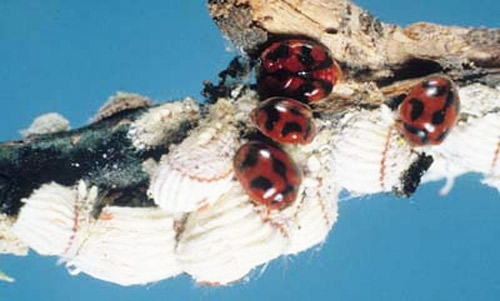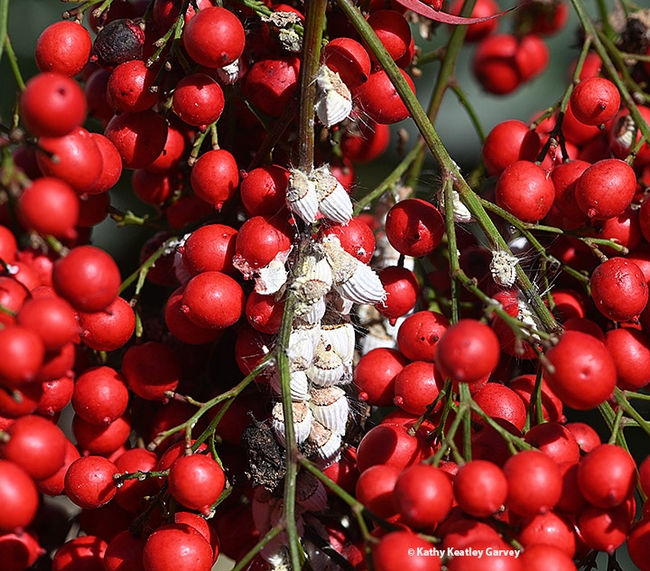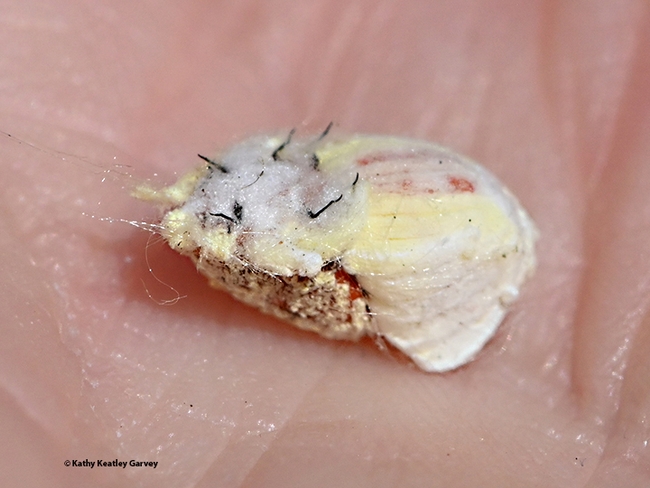
And curious photographers.
Last weekend we spotted cottony cushion scale, Icerya purchasi, infesting the twigs and branches of our Nandina (Nandina domestica), planted 22 years ago. This scale insect is more commonly found on citrus crops and Pittosporum, but there it was.
It's a native of Australia and apparently made its way to California on acacia plants around 1868 or 1869, and began infesting citrus groves in southern California. It's now found throughout the world, wherever citrus is grown. Pick it up and it's as light as a feather and soft as cotton.
If you look closely at a mature cottony cushion scale (hermaphrodite), you can see that it's reddish brown with black hairs. It produces a ridged white egg sac encasing hundreds of brilliant red eggs--the color of pomegranate kernels.

"Like other scales, cottony cushion scale decreases the vitality of its host by sucking phloem sap from the leaves, twigs, branches, and trunk," according to UC IPM. "Feeding can result in defoliation and dieback of twigs and small branches when infestations are extremely heavy. Heavy populations can severely reduce the yield of citrus trees. Like soft scales, cottony cushion scale excretes honeydew, which is usually accompanied by blackish sooty mold growth and ants."
"Cottony cushion scale has two to three generations a year," UC IPM tells us. "Unlike most other scales, it retains its legs and its mobility throughout its life. Cottony cushion scale completes its life cycle in three months during warm weather conditions."
Its most famous natural enemy is the vedalia beetle, Rodolia cardinalis, introduced from Australia in the 1890s to save California's citrus crops. Vedalia beetle vs. cottony cushion scale--this is a clear-cut case of successful biological control. Vedalia beetles are distinguished by their darker red domes with splotchy black markings.
Another natural enemy is the parasitic fly Cryptochaetum iceryae, which lays its eggs inside the cottony cushion scale. "It deposits one to four eggs inside each second-instar, third-instar, or adult female scale body," UC IPM points out. "The eggs hatch into larvae that feed within the scale." (See more information on the UC IPM website)
Interesting that we've never found the cottony cushion scale on our nearby tangerine and lemon trees. "Marked Safe from Cottony Cushion Scale."
For now!
Attached Images:

